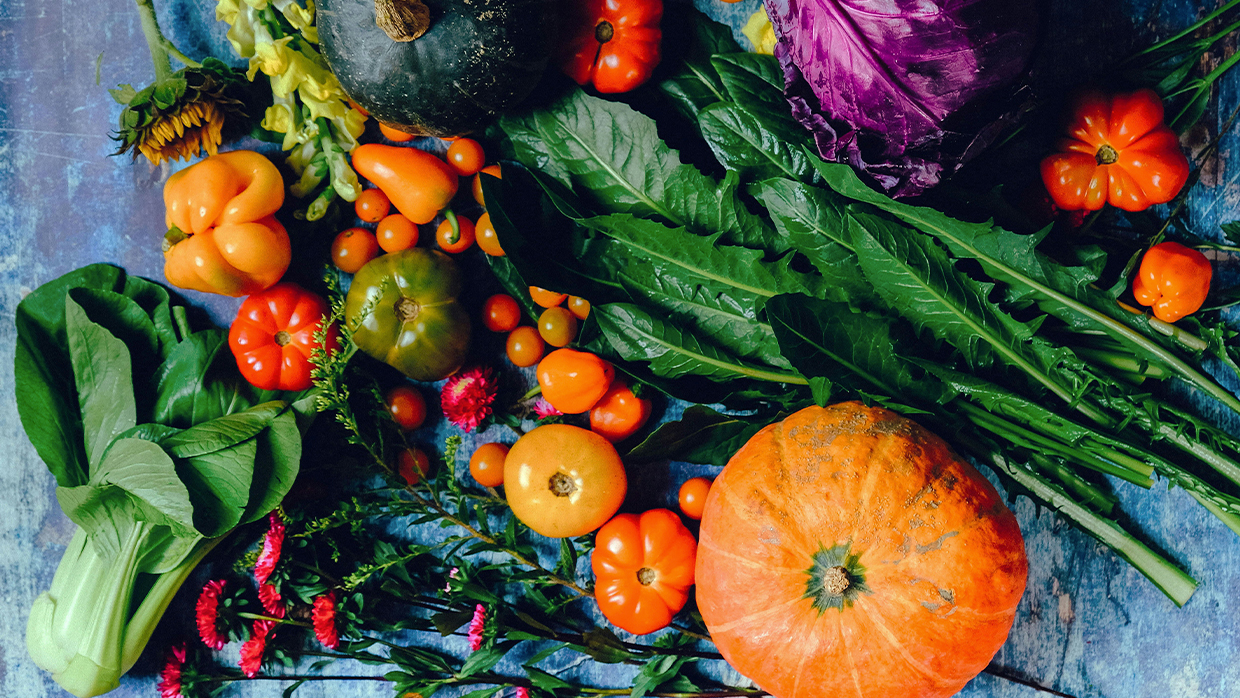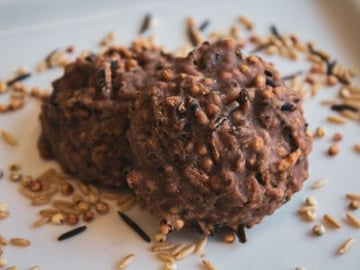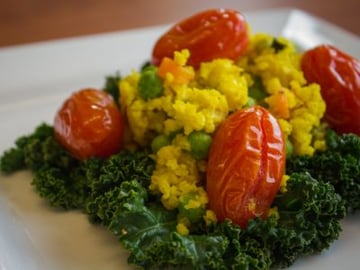University of Vermont Highlights Plant-Based Future 50 Foods

This year, the Sodexo dining team at University of Vermont embraced the future of sustainable foods, serving an exciting, innovative dinner inspired by the World Wildlife Fund’s Future 50 Foods list.
 The list was created by Knorr and the Wildlife Fund for the Future 50 Foods report in 2019, which engaged scientists, nutritionists and agricultural experts to identify 50 sustainable ingredients. It includes familiar foods like lentils and kale, and lesser-known foods like pumpkin flowers and cactus. The selected foods are biodiverse, affordable and flavorful, delivering lower environmental impact and high nutritional value.
The list was created by Knorr and the Wildlife Fund for the Future 50 Foods report in 2019, which engaged scientists, nutritionists and agricultural experts to identify 50 sustainable ingredients. It includes familiar foods like lentils and kale, and lesser-known foods like pumpkin flowers and cactus. The selected foods are biodiverse, affordable and flavorful, delivering lower environmental impact and high nutritional value.
For students at this environmentally conscious Northeast campus, the dinner was a hit. Especially dessert — no-bake cookies whipped up from puffed wild rice, peanut butter and chocolate.
"Our students are demanding more plant-based dishes, and there is a lot of overlap between Future 50 and plant-based," explains Nicole Reilly, sustainability and campus partnership manager and a registered dietitian. "This is what they’re really looking for."
Three campus dining halls offered a Future 50 meal, with each location featuring different options.
Tantalizing main dishes included Cajun shrimp with barley mushroom rice pilaf, black-eyed peas and okra and cumin-roasted chicken thighs with roasted sweet potato, sauteed spinach and caramelized onions. A delicious millet pilaf was paired with roasted grape tomatoes and kale. Sides included quinoa and black lentil salad and chorizo, kale and potato soup. A kale and red onion grilled cheese sandwich offered a healthy comfort food option.
 Many UVM students are vegetarians and flexitarians, says District Executive Chef Brandon Williams, making it essential to ensure that plant-forward options are always available. A few student favorites on campus include kale chips, quinoa burgers and roasted tofu.
Many UVM students are vegetarians and flexitarians, says District Executive Chef Brandon Williams, making it essential to ensure that plant-forward options are always available. A few student favorites on campus include kale chips, quinoa burgers and roasted tofu.
Some Future 50 foods are less familiar though, so the team created educational materials for each station. Raw ingredients were displayed alongside engaging signage and digital screens with fun facts. A social media campaign with vibrant photos created excitement before the dinner.
Williams says students were actively engaged at the event, moving from station to station to learn about and try the foods.
Executive Chef Eric Caravan, who oversees the Central Campus Dining Hall, says students "really care about the environmental impact of their food choices but don’t want to sacrifice flavor or variety, so you have to get creative."
Creating beautiful dishes and displays encouraged student participation. "You eat with your eyes," he says. "It helped tell our story."
The dinner was so successful that the dining team is already planning follow-up events.
UVM chefs also plan to continue offering the foods throughout campus dining venues, incorporating them into menus at a variety of stations.
"By treating the ingredients this way, we normalize consumption and create healthier dining habits," Caravan says. "The shift in these patterns will hopefully produce a healthier student and planet alike."